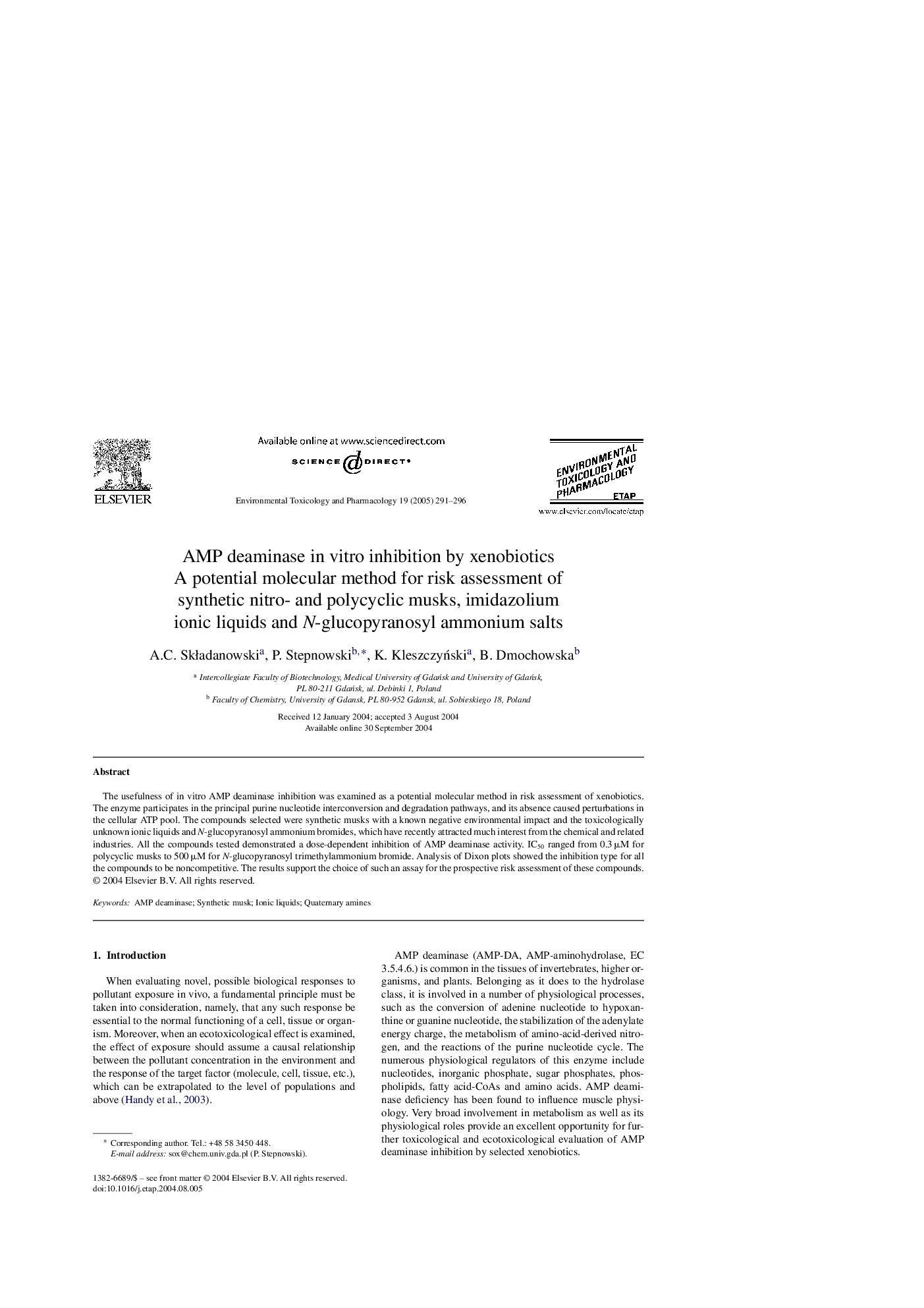| Article ID | Journal | Published Year | Pages | File Type |
|---|---|---|---|---|
| 9030173 | Environmental Toxicology and Pharmacology | 2005 | 6 Pages |
Abstract
The usefulness of in vitro AMP deaminase inhibition was examined as a potential molecular method in risk assessment of xenobiotics. The enzyme participates in the principal purine nucleotide interconversion and degradation pathways, and its absence caused perturbations in the cellular ATP pool. The compounds selected were synthetic musks with a known negative environmental impact and the toxicologically unknown ionic liquids and N-glucopyranosyl ammonium bromides, which have recently attracted much interest from the chemical and related industries. All the compounds tested demonstrated a dose-dependent inhibition of AMP deaminase activity. IC50 ranged from 0.3 μM for polycyclic musks to 500 μM for N-glucopyranosyl trimethylammonium bromide. Analysis of Dixon plots showed the inhibition type for all the compounds to be noncompetitive. The results support the choice of such an assay for the prospective risk assessment of these compounds.
Related Topics
Life Sciences
Environmental Science
Health, Toxicology and Mutagenesis
Authors
A.C. SkÅadanowski, P. Stepnowski, K. KleszczyÅski, B. Dmochowska,
